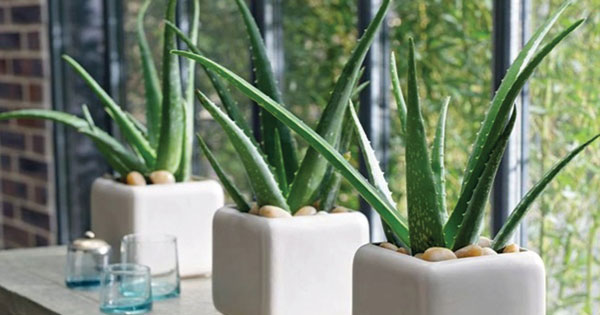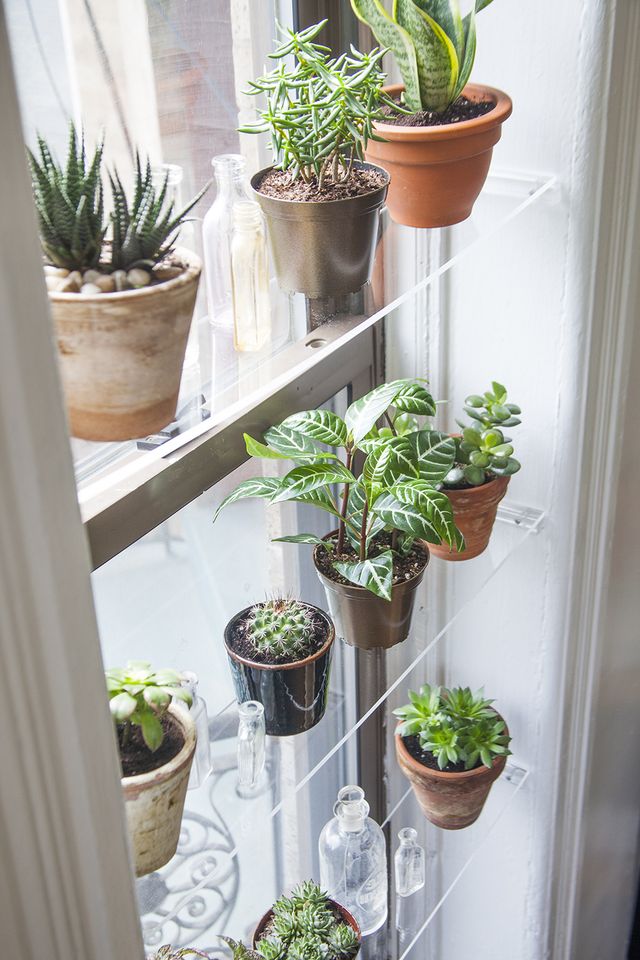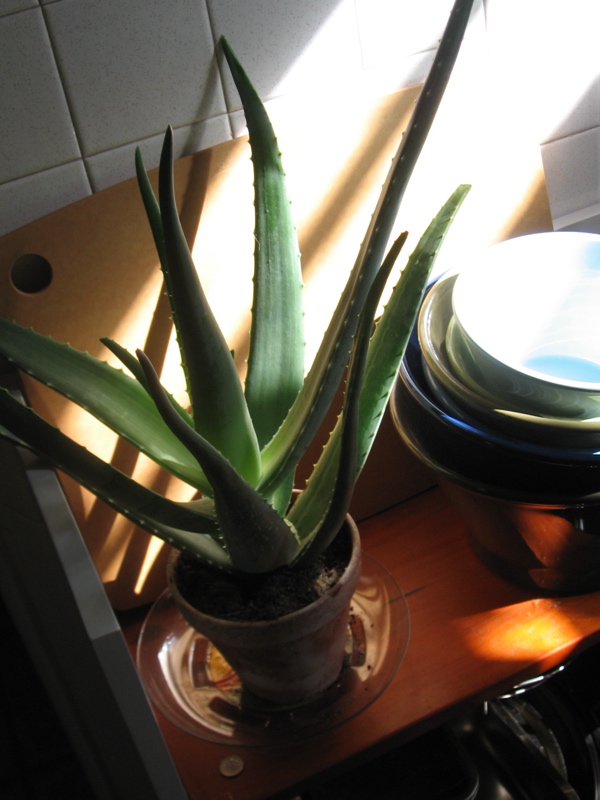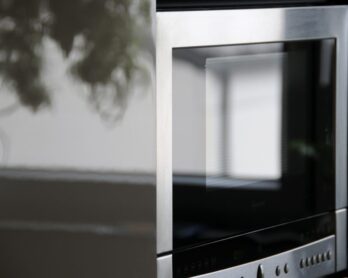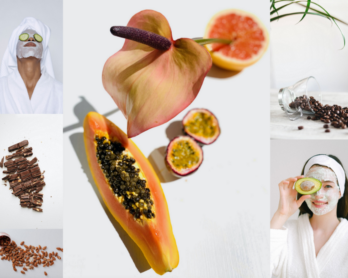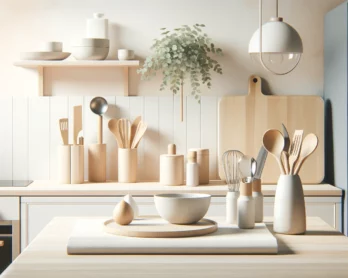The common houseplant aloe vera has some extraordinary qualities that have made it very popular. Foremost are its medicinal uses. It is easily recognizable by its long, fleshy leaves growing in a rosette pattern. A succulent, it has a natural capacity for water storage and a shallow root system, making it the ideal house plant. Additionally this plant is very easy to take care of. These all makes aloe vera, a medicine plant, great to have in your kitchen
Commonly called the medicine plant, aloe vera, or true aloe (aloe barbadensis),is an ingredient in numerous skin care products. But for the price of the first potted plant, you can have the healing properties of aloe on hand in your own home. If you’re lucky, you can get a free start from a friend’s aloe plant at repotting time.
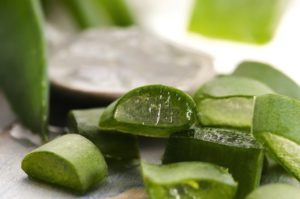
Many aloe lovers keep a pot in the kitchen, where most household burns occur. For burn treatment, simply break off one of the thick, fleshy leaves and rub the sap that oozes out onto the burned skin. Squeeze or crush the leaf if necessary. The sap also is soothing to dry, irritated skin. The broken leaf will not grow back, but a healthy plant will quickly produce many more leaves and offshoots.
Aloe is a perennial succulent, but it is too tender to survive outdoors except in very warm climates. In cooler regions, it should be grown in containers and brought indoors when the temperatures are expected to drop below 50 degrees. Outdoors it is an appropriate addition to a blue and gray theme garden. As a precaution, however, expose plants that have been grown indoors to the sun gradually to allow them to adjust. Like many plants, it may sunburn if brought directly from the protection of the house and left out in the scorching summer sun.
To grow as a potted plant in the house, place aloe vera in bright, filtered light. A southern, southeastern, or eastern window is best. During the growing season, it does best at average indoor temperatures, 68 to 75 degrees. Let the soil dry out thoroughly between light waterings. Be careful that you do not overwater or allow the plant to sit in mucky soil, or it will rot. Feed it monthly during the growing season with a low-nitrogen, high-potassium fertilizer. Wood ashes are a good source of potassium for plants and are easily obtained. Do not use ashes that are tainted with soot-removal compounds, as these may harm the plant. A simpler method is to use half-strength liquid fertilizer and fertilize less often. Aloe vera rests during the winter, requiring less light and cooler temperatures. Water only enough to keep the leaves from withering. Do not fertilize in winter.
Repot with a cactus mix when the roots occupy half of the pot space. Regular potting soil will do, but the cactus mixture drains more readily, making it less likely that the plant will suffer from overwatering. A layer of clean stones or broken brick at the bottom of the pot will also improve drainage. If your mature plant becomes top-heavy and topples over, add a little soil around the base to prop it back up. Better yet, divide and give the extras to a friend.
To propagate, remove the suckers that form around the base and plant them in moist sand until they develop a good root system. You also can propagate by stem cuttings and seeds. For stem cuttings, snap off a medium-sized leaf and let the wound dry for a couple of hours. Then dip the broken end into a powdered rooting compound such as Rootone. Stand it in damp sand until it develops roots. Then move it to a small pot of cactus soil.
Aloes also can be started from seeds. Most likely, you must buy the seed because aloes rarely bloom indoors. When they do, the blooms range from pale pink to red or yellow in color.
| Image sources |
|---|
| http://blog.nurserylive.com/2017/02/11/have-you-tried-growing-aloe-vera-indoors-and-gardening-in-india https://beeinthecity.wordpress.com/tag/geranium/
|

